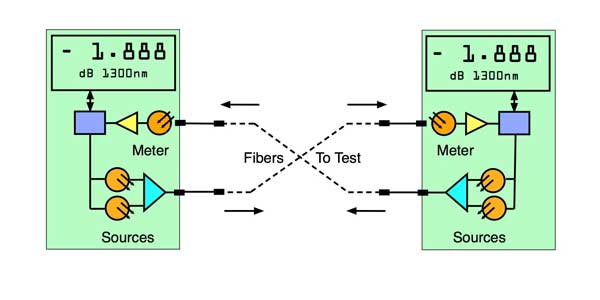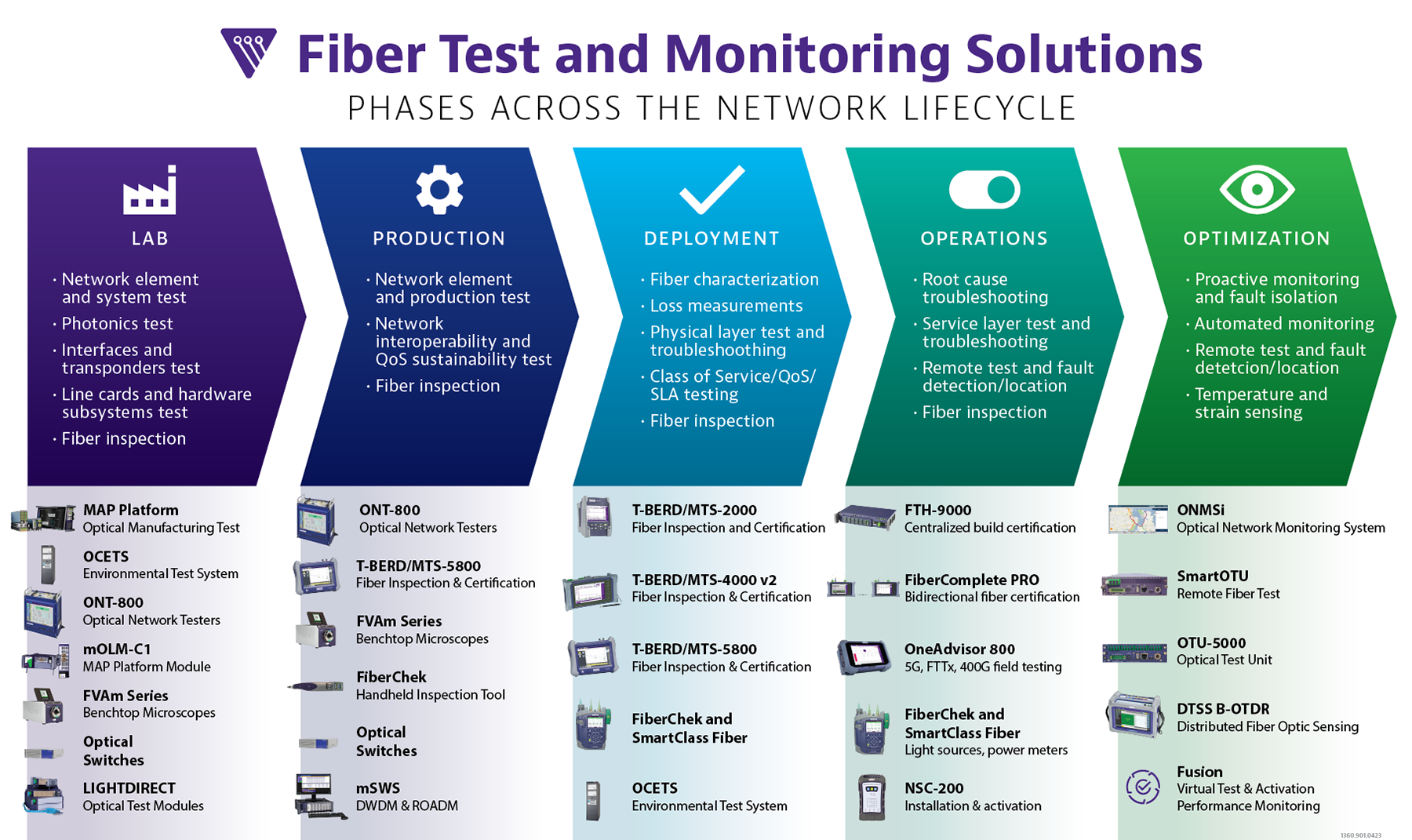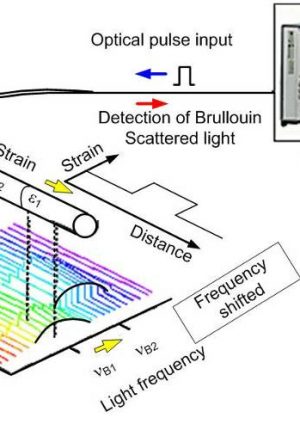Cutting-Edge Technology for Optical Fibre Diameter Analyser Precision
Cutting-Edge Technology for Optical Fibre Diameter Analyser Precision
Blog Article
Maximize Your Fibre Optic Performance: Comprehending Optical Fibre Size Analyser Technology
The performance of fibre optic systems is critically affected by the accuracy of their diameter, a factor typically overlooked in the pursuit of ideal signal stability. Comprehending the modern technology behind optical fiber diameter analysers discloses the detailed balance in between dimension accuracy and manufacturing high quality.
Relevance of Optical Fibre Size
The diameter of optical fibre plays a crucial duty in identifying the performance and performance of communication systems. Alternatively, smaller sized diameters tend to sustain less settings, which can enhance signal clearness and lower crosstalk.

Furthermore, recognizing the diameter's implications can lead to cost financial savings by decreasing the need for signal amplification and repeaters in extensive networks (optical fibre diameter analyser). In conclusion, the significance of optical fiber diameter can not be overstated, as it directly affects the overall efficiency and reliability of modern-day communication systems

Exactly How Size Impacts Signal Quality
Signal high quality in optical fibre systems pivots substantially on the diameter of the fiber. A smaller sized diameter can lead to higher depletion rates, resulting in signal loss as light trips through the fiber.
On the other hand, bigger sizes normally permit enhanced light capture and reduced modal diffusion, improving signal clearness. In multimode fibers, a larger core diameter can sustain numerous light settings, yet it might additionally introduce intermodal diffusion, which can degrade signal high quality. Choosing the optimal fibre size is critical for achieving the wanted performance in specific applications.
Furthermore, the communication in between the fibre diameter and the wavelength of the light utilized plays an essential role in figuring out the reliable transmission range and total signal honesty. Understanding exactly how fibre size affects signal top quality is necessary for network developers and engineers aiming to maximize optical fibre systems for trustworthy, high-speed data transmission.
Review of Size Analyser Technology
In lots of optical fibre production processes, accurate dimension of fibre diameter is necessary for making sure constant performance and quality (optical fibre diameter analyser). Diameter analysers are advanced instruments made to evaluate the physical measurements of optical fibres with high accuracy. They use sophisticated optical and laser technologies to gauge the diameter, ovality, and concentricity of the fiber, thus offering vital information for quality control
These analysers can operate in-line during the manufacturing process or as component of off-line testing protocols. In-line systems enable real-time surveillance, enabling producers to adjust criteria promptly, thus maintaining optimal manufacturing problems. Off-line analysers, on the other hand, give thorough evaluations of batches, guaranteeing that any discrepancies from specified tolerances are identified and dealt with.
Diameter analysers my website dramatically contribute to the reduction of problems in optical fibers, enhancing general product reliability. By continually determining key parameters, these modern technologies assist in compliance with sector requirements and specifications. As the demand for high-performance optical fibres remains to rise, the function of size analysers becomes progressively essential in attaining the preferred high quality and efficiency requirements in fiber optic systems.
Secret Functions of Fiber Diameter Analysers
Although numerous versions of fibre size analysers exist, they typically share a number of crucial functions that boost their capability and integrity. Among the most significant attributes is high-resolution dimension abilities, which make sure precise diameter analyses, vital for keeping quality control in fibre production. Furthermore, numerous analysers incorporate advanced optical sensing units created to detect minute variations in fiber size, therefore giving important data for process optimization.
Another crucial attribute is real-time tracking, enabling operators to obtain prompt responses on fibre diameter throughout the manufacturing procedure (optical fibre diameter analyser). This capacity assists in fast changes and lowers the chance of flaws. Several analysers likewise come outfitted with user-friendly user interfaces, allowing operators to easily browse through settings and information results
Additionally, durable information storage and analysis capabilities are important for tracking historic efficiency fads and making sure conformity with industry requirements. Some versions even provide connectivity options for integration into existing production control systems, enhancing total operational performance. Compact and portable designs allow for flexible deployment within manufacturing atmospheres, making sure that top quality assurance processes are smooth and effective. These attributes jointly add to the effectiveness of fiber size analysers in optimizing fibre optic efficiency.
Finest Practices for Fiber Optimization

First, normal calibration of optical fibre size analysers is necessary. This makes certain exact measurements and decreases potential disparities that can influence performance. Next off, preserving a clean workplace is important; dust and contaminants can lead to signify deterioration.
Additionally, it is very important to pick fibres that fulfill details application needs. This includes evaluating elements such as depletion, data transfer, and ecological conditions. Correct setup strategies need to also be adhered to, consisting of staying clear of sharp bends and excessive stress, which can jeopardize fiber honesty.
Furthermore, employing sophisticated surveillance systems can promote real-time efficiency assessments, allowing punctual recognition of issues. Normal testing and maintenance must be conducted to make certain that fibers remain within optimum operational specifications.
Finally, training workers on the current fiber optimization technologies and their explanation methodologies will certainly see post boost their capacity to carry out reliable methods. By complying with these ideal practices, organizations can considerably improve the performance and lifespan of their optical fiber systems, ensuring reliable communication and data transfer.
Final Thought
In final thought, the integration of optical fibre diameter analyser technology is crucial for maximizing fiber optic efficiency. By guaranteeing specific dimensions of fibre dimensions, these analysers dramatically enhance signal top quality and lower losses throughout information transmission.
Signal quality in optical fiber systems hinges substantially on the diameter of the fiber.In numerous optical fiber production processes, precise dimension of fibre diameter is vital for ensuring regular efficiency and high quality. As the need for high-performance optical fibres proceeds to rise, the duty of size analysers becomes significantly essential in achieving the preferred top quality and performance criteria in fibre optic systems.
These functions collectively add to the efficiency of fiber diameter analysers in enhancing fibre optic efficiency.
In conclusion, the assimilation of optical fiber diameter analyser modern technology is important for maximizing fibre optic performance.
Report this page